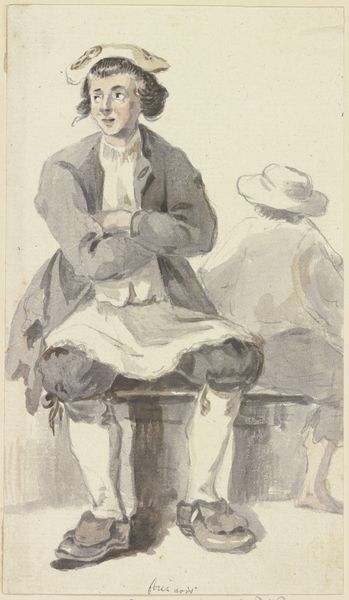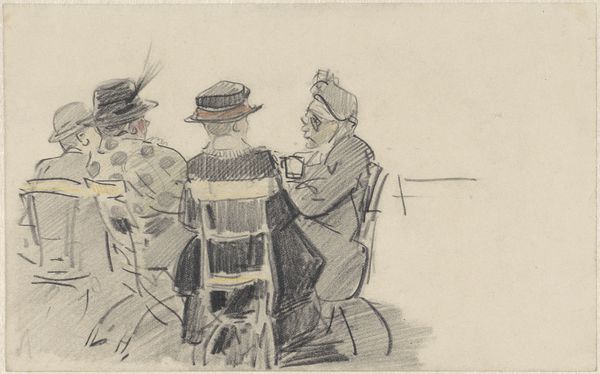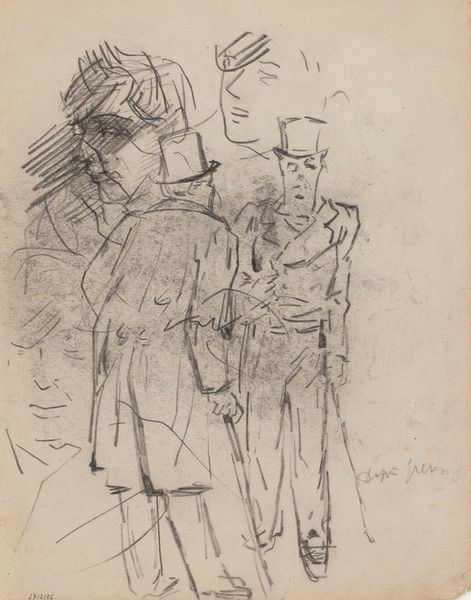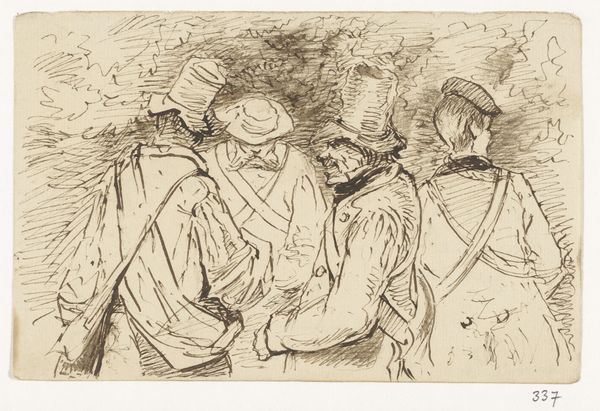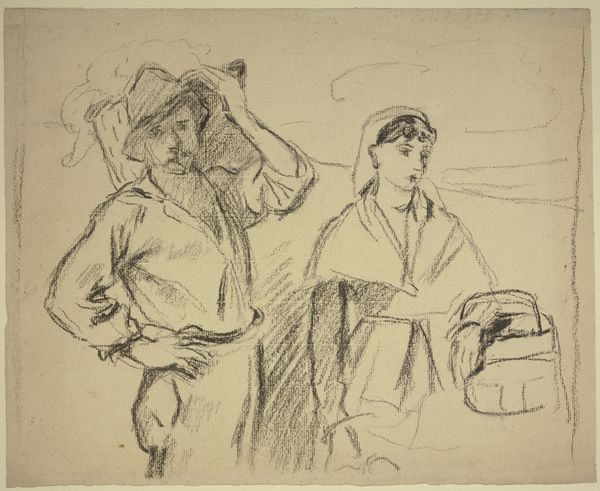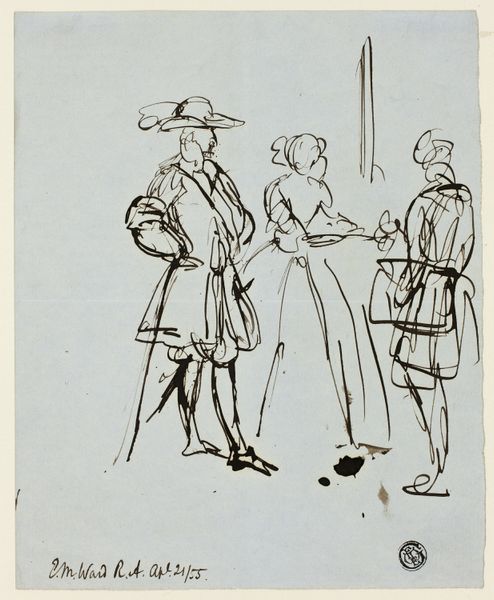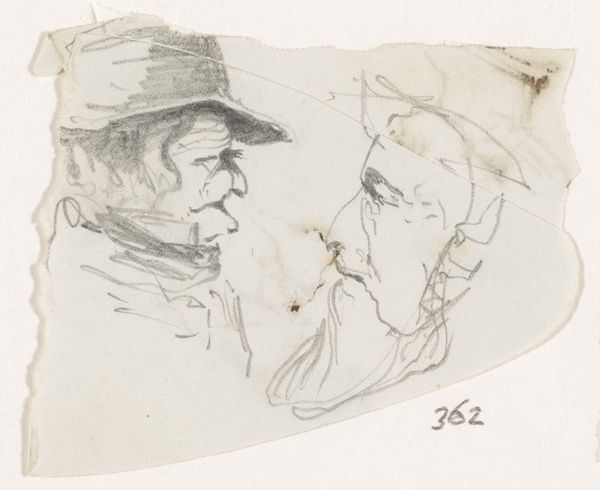
drawing, paper, watercolor
#
portrait
#
drawing
#
landscape
#
paper
#
watercolor
Copyright: Public Domain
Editor: It’s got this wonderfully melancholy feel. The light is soft, diffused, and the figures seem almost adrift in their surroundings. Curator: Indeed. This watercolor and pencil drawing, “Donkey Driver,” now held at the Städel Museum, immediately speaks to me about the artist's meticulous attention to process, most obvious when studying the delicate layering of pigments and the varying densities of pencil strokes on this sheet of paper. Editor: The lack of a firm date allows us to speculate on the broader social contexts as well. Notice how these figures appear disconnected. The class dynamics at play. This subtly conveys the isolation some people experience within broader social changes. The donkey driver almost appears separate, excluded. Curator: The composition is fascinating when viewed from a materialist perspective. How the choice of relatively inexpensive media like paper, pencil, and watercolor impacts the perceived value and categorization of this artwork. It challenges those old hierarchies separating "fine art" from more accessible forms of artistic production. It asks: what labor was needed, what did the subject get in return? Editor: It also challenges conventional depictions of labor. This piece steers away from idealizing work, showing instead these quieter moments that perhaps reveal the fatigue or indifference embedded in this job. We're left wondering about their stories and whether the title might actually misdirect our attention to more marginalized or overlooked members of society. Curator: Precisely! Thinking about materials themselves opens discussions regarding how those decisions shape perception and engagement— how accessible watercolor enables quicker capturing a scene, whereas the physical labor producing marble may lend permanence into history in quite contrasting means, each medium intrinsically embodying a particular method as its subject shifts overtime amid industrial expansion . Editor: Agreed. The medium definitely informs its narrative power! The artwork encourages conversation about how our interpretations of history, class, race, gender can deepen based on an examination surrounding medium availability itself shaping and limiting the visual vocabulary—reflecting specific period assumptions within access privilege embedded throughout history. Curator: I see this interplay—that push and pull between material conditions of art-making process shaping societal narratives so acutely—and I come away appreciating just how dynamic such intersections really exist when decoding historical objects through these lenses both analytically rigorously researched using primary accounts or deeply embedded personally among experiences individuals may witness during labor practices— illuminating otherwise unseen interrelations when dissecting social construction itself embedded implicitly too at some historical stage along economic structures or policy legislation... Editor: In a sense, seeing 'Donkey Driver,' from both lenses lets analyze intersections relating societal forces as integral to shaping any artwork since access constraints and privilege affect available tool selection creating aesthetic boundaries which echo throughout generations whether they serve privileged interests at cost human dignity or aim subvert power while upholding more democratic approaches via collective means like labor guilds supporting artists democratize access...
Comments
No comments
Be the first to comment and join the conversation on the ultimate creative platform.
